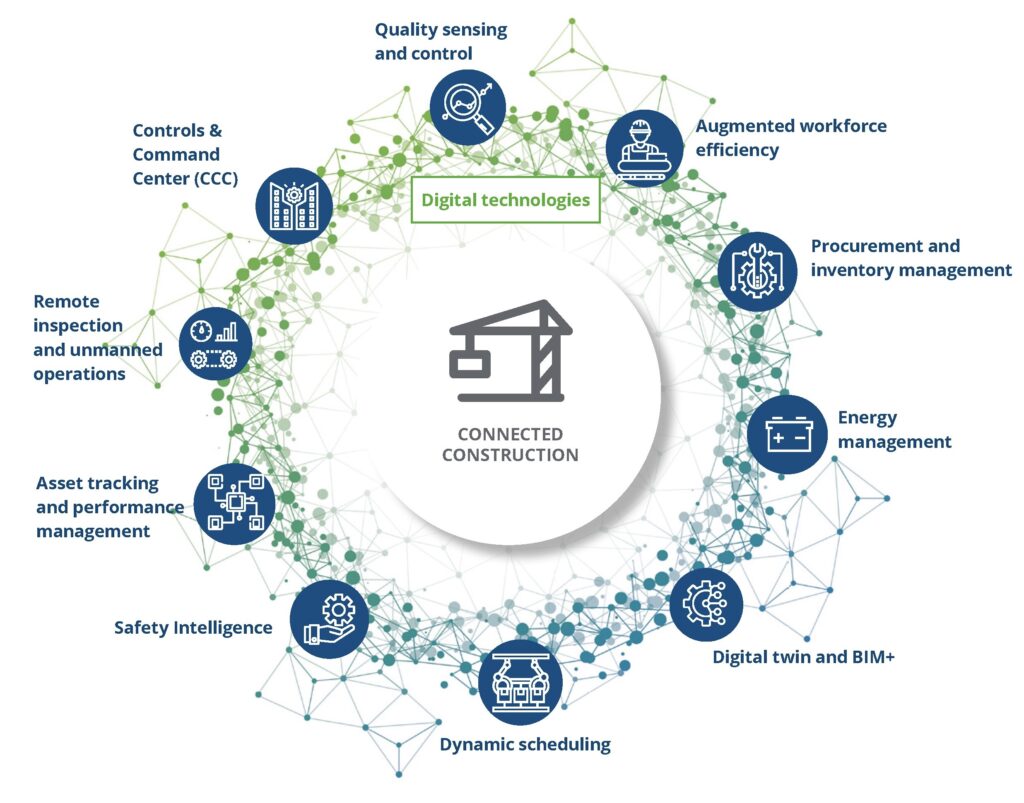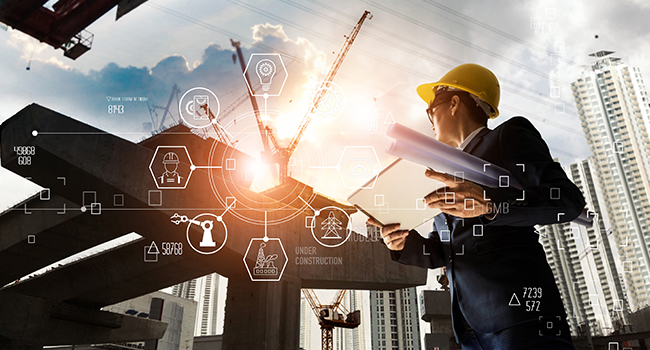
| Why Connected Construction? |
| The construction industry has shown an unparalleled level of resiliency over the past year. In navigating one of the most difficult periods in recent history, companies have been forced to adapt to an entirely new way of working—adopting new technologies, new processes and new mindsets. Leaders across the industry have acknowledged and responded to the galvanizing impacts of the pandemic, with two-thirds of executives agreeing that COVID-19 has accelerated industry transformation and half reporting they’ve increased investments to prepare for the new future. Out of necessity, the industry has hit the fast-forward button on this technology adoption—abandoning paper, automating workflows and optimizing data. Now more than ever before, leaders have the opportunity to embrace and capitalize on this current transformation and make construction more predictable, safe and sustainable by adopting a methodology that sounds simple yet is incredibly powerful: connected construction. |
Connecting construction projects, teams and businesses are a worthy endeavor. Breaking down information and communication silos, as well as connecting teams and data helps to reduce rework, delays and risk—while gaining valuable insight and visibility into the entire building process. But contractors still have a long way to go to bring this concept into a reality that permeates the industry.
New workflows and technologies have generated unprecedented volumes of data and, according to FMI, 95% of data captured in construction and engineering industry currently goes unused. Disconnected people and information will continue to hinder firms and projects across the sector.
It’s time to address these gaps and seize the future of connected construction to help mitigate the disruption caused by the pandemic, build resiliency and ensure the industry is prepared to act on the vast opportunities that connected construction will bring.

Driven by the necessities of the pandemic, businesses are realizing what is possible with digital transformation and growing their efforts. New technology solutions are now available to support every workflow in construction and provide seamless integrations across projects.
With connected construction, business can not only survive the new normal, but embrace the new possible. Just as “Rome wasn’t built in a day,” the blocks of connected construction will fall into place over time.
While the future of connected construction might sound far off, the truth is that many of the fundamental aspects of connected construction are already in place and fully operational. It’s time for firms to create a digital foundation that will connect teams, workflows and data to deliver better outcomes today—and build a better industry for the future.

